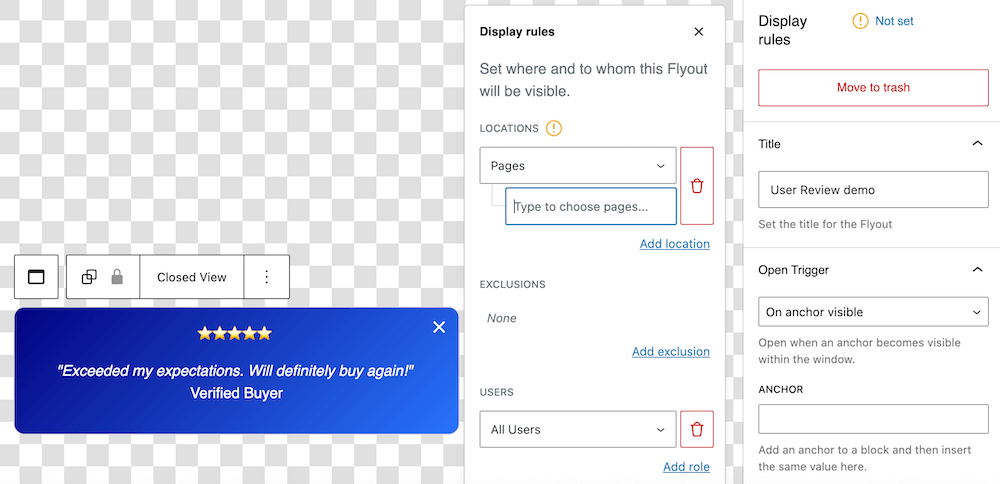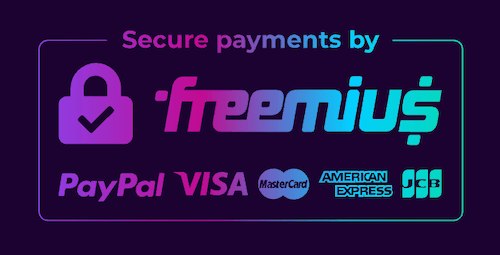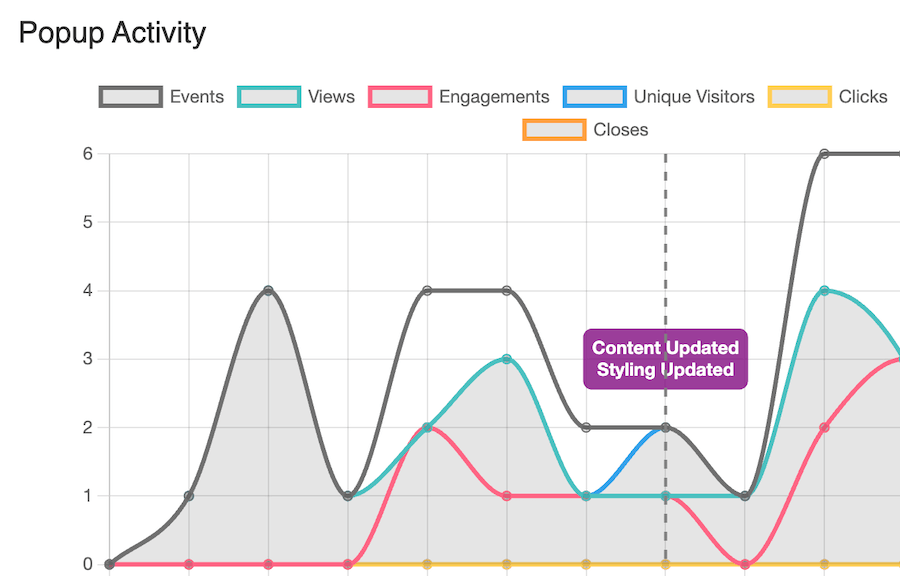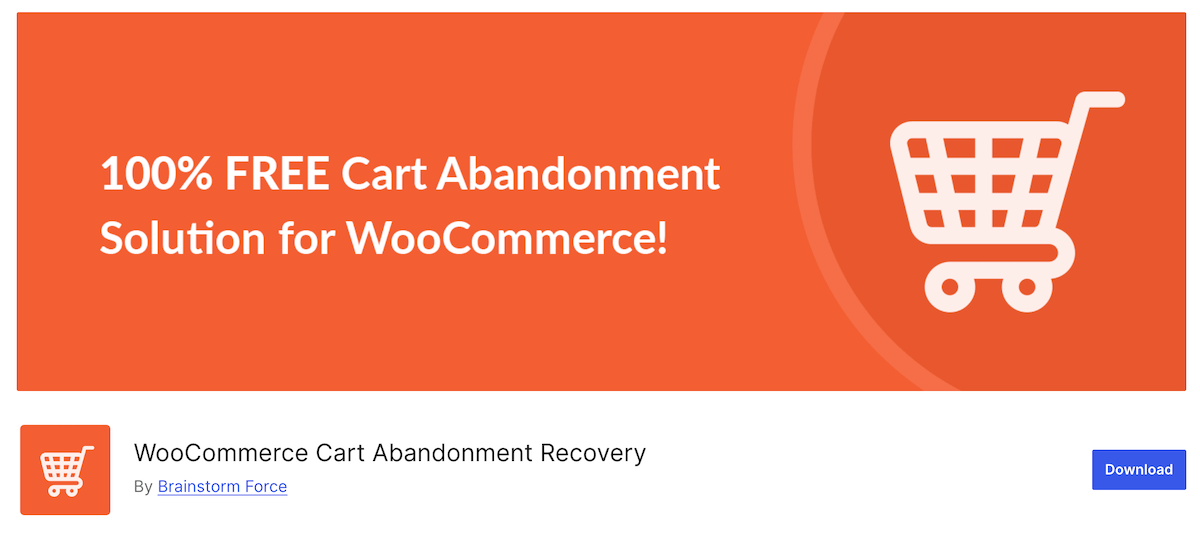Is your WooCommerce store leaving money on the table because of suboptimal conversion rates?
A “good” conversion rate is between 2-5% and achieving this means that you’re in the top tier of ecommerce stores. But this isn’t always that simple. From sluggish product pages to clunky mobile checkouts, microscopic friction points push shoppers toward the “X” in their browser. Statista’s latest data shows a staggering 81 % global cart abandonment rate, proving most of us still haven’t made the buying experience effortless.
This is where CRO comes into play. The best thing about conversion rate optimization (CRO) is how much it boosts everything else. Not only does it help improve your conversions, but it makes all your other marketing efforts work harder and deliver better results.
In this guide, we’ll look at eight rigorously tested, data-backed strategies that eliminate that friction and reclaim the sales already sitting in your funnel. We’ll show you how to track every test inside WooCommerce or FooConvert’s built-in analytics.
This guide will assist store owners by taking them away from “endless tweaks” and into measurable revenue growth via actionable, proven tactics. Many of these are doable within minutes using FooConvert’s lightweight pop-ups, bars, and flyouts, so you can start measuring wins before the next traffic spike rolls in.
8 Bold, Data-Driven Strategies to Skyrocket WooCommerce Conversions
Ideally, conversion optimization should take a holistic approach, covering everything from site speed and checkout friction to trust signals and post-purchase recovery. Even the most minuscule technical alterations (like shaving milliseconds off your load time or repositioning a call-to-action button) have the potential to increase conversions.
Any method you use should cover every step and be in the flow of the customer journey from start to finish. Using versatile tools like FooConvert, for example, can contribute to efficient testing and optimization without compromising the speed of a website. As such, the strategies that we’re going to look at are data-backed and target a particular point of pain along the sales funnel, thus never leaving a single opportunity for growth unexplored.
1. Upgrade Your Hosting: Sales are Built on Your Site Performance
When particular limits on CPU, RAM, or PHP workers are surpassed at any given time, sites tend to slow down which can result in shopper frustration. A Think with Google study shows that cutting just 0.1 seconds off your site speed can lead to an 8% increase in conversions – a little time cut with a big return.
When you upgrade your hosting plan, your store benefits from more resource allocation and possibly a better infrastructure built for higher performance. This includes faster server speeds, more processing power, and better memory, all designed to handle increased traffic during busy times. These upgrades ensure your store loads quickly and remains reliable during sales or promotions.
Upgraded hosting also includes features like caching, optimized databases, and HTTP/2, which help deliver content faster and improve the overall browsing experience. This ensures a quick, seamless checkout process, leading to more completed orders and happier customers.
But you need to watch for the warning signs. If your host starts showing “resource limit” warnings or if pages are slow to load during peak times, it’s a clear sign you need to upgrade to avoid losing sales.
Fast hosting is therefore a big win for WooCommerce shops. Your entire shopping process will run more smoothly, giving you happier customers, and leaving you more relaxed while the crowds come in.
2. Implement Behaviour-Based Promotions
There are various ways to increase conversions by targeting specific user behavior. To begin with, you can target returning visitors who haven’t yet made a purchase by using website cookies or user behavior tracking to identify them. Following this, you can display personalized incentives such as limited-time discounts, free shipping offers, or loyalty rewards pop-ups. You can also retarget them through email or ads with exclusive deals based on their browsing history.
Alternatively, create VIP-only discount bars visible exclusively to logged-in customers. Again, tracking users will enable you to target logged-in customers to whom you can display loyalty-based promotions. With FooConvert’s Display Rules, you can enable targeting by user login status and role, allowing you to display CTAs or special offers to set user groups.

To set up special offers for first-time visitors while staying GDPR-compliant, you could integrate a cookie-based tracking system that distinguishes new users. Use FooConvert’s cookie-consent bar or your existing Consent Management Platform (CMP) to obtain user permission before placing cookies. Once consent is granted, you can deploy a script that sets a “first-visit” cookie and triggers a special offer, such as a welcome discount or pop-up, ensuring it only appears for users without the cookie.
3. Inject Dynamic Trust Badges to Assure Shoppers
By looking into abandonment and drop-off reports in Google Analytics (or FooConvert’s dashboard), you can learn how to spot high-friction moments on product and checkout pages. This provides you with a good opportunity to then place trust signals accordingly, with the help of those insights.
Some of the more effective trust signals include:
- Security badges: These can help to reassure visitors that their personal and payment information is protected through trusted encryption and secure checkout systems. Here’s an example of the security badge we use:

- Review counts: Showing the number of customers who have purchased and rated a product can credibility through social proof.
- Guarantee icons: Use these to communicate risk-free buying, such as money-back guarantees or easy returns, helping reduce purchase hesitation.
WooCommerce store owners can use TrustPulse or similar badge plugins to create trust elements. These can show real-time purchase and activity notifications, such as purchases or sign-ups, which builds trust in your product and brand.
You can maximize the impact of these trust signals by placing them at strategic points in the customer journey. Embedding badges in FooConvert means you can maximize on building trust with minimal effort. To do this, place your trust signals (badges, guarantee icons, etc.) into flyout or bar widgets, then set your locations. You can use different signals depending on the page context – for example, you may want a review count on a product page, whereas a guarantee badge would be better on the checkout page. These can be triggered to display when customers reach a critical point in the page, or when they signal intent to buy.
The Best WordPress Conversion Plugin
FooConvert is an easy-to-use WordPress conversions plugin, draw attention, increase sales and engagement.
4. Drop Customer Reviews at High-Friction Decision Points
To identify the ‘moment of hesitation’ point on your product pages, use scroll depth analytics to see where users typically pause or stop scrolling. (Tools like Hotjar or Crazy Egg can help here.) Look for patterns where engagement drops, such as near pricing, reviews, or feature sections, which may indicate uncertainty or friction. These insights help pinpoint where to focus your attention to keep users moving toward conversion.

One way to encourage users to commit is to include customer reviews, particularly those addressing specific objections, as these often convert better than generic praise. Given the psychology of social proof – we look to others’ actions when uncertain – showing reviews at these points raises the purchase likelihood.
FooConvert is hands-down one of the best conversion plugins I’ve come across. If you’re serious about growing your business and turning more visitors into paying customers, this plugin is a must-have!
In FooConvert, you can embed social trust signals or reviews from other plugins if you enable Compatibility → “Allow inline scripts”. This lets you run front-end scripts – such as those from review platforms or trust badge providers – directly within FooConvert widgets, as long as the external plugin supports client-side embedding. Try this with plugins like TrustPilot or Judge.me and test them with FooConvert’s “Allow inline scripts” setting enabled.
Another option is to segment reviews by customer type to show relevant social proof. Use an external plugin like Customer Reviews for WooCommerce to get the data, and use FooConvert to display customized snippets in flyouts or bars styled to suit your brand.
5. Run A/B Tests and See What Works
We suggest adopting a lean approach to WordPress A/B testing, starting simple with one variable. You can then assess, and based on the data, change this again or choose another variable to change.
We found during the WooCommerce A/B tests involving our own plugins that even tiny changes – one copy change in the popup title, changes in flyout timing, and so on – might bring double-digit increases in conversion. Every store being different, the ones who succeed are never those who copy what is trending; rather, they make decisions based on data and treat each test as a learning opportunity about their customers.
Brad Vincent, FooPlugins Developer & CEO
Focus first on high-impact elements like headlines, calls to action (CTAs), offers, and images, as these directly influence user engagement and conversions. You can use FooConvert to set up and test elements like CTAs or promotional offers. The widget analytics allow you to track changes made to each widget and the conversion metrics following these changes.

To declare a winner in A/B testing, Google recommends reaching a 95% confidence level, meaning there’s only a 5% chance the observed difference is due to randomness. This ensures reliable, statistically significant results. After each test, document the hypothesis, metrics, results, and insights to keep track of changes that work and avoid repeating ineffective ideas.
To avoid common A/B testing pitfalls:
- Don’t end tests early: wait for statistical significance from a sufficient sample size.
- Avoid testing too many variables at once: stick to one change per test.
- Segment your data: different user types may respond differently.
- Ensure consistent traffic: sudden spikes or drops can skew results.
- Run tests over a sufficient period of time: capture both weekday and weekend behaviors.
6. Capture Escaping Buyers: Exit-Intent Offers With Smart Triggers
Exit Intent offers are a useful way to boost engagements and sales, targeting customers who have shown some interest but haven’t fully committed to a purchase, sign up or other action. Exit-intent detection works through mouse movement tracking, signalling when the user is about to exit or close the page.
By implementing a minimum of three seconds dwell time, which means the visitor must remain on the page for at least three seconds before the exit-intent trigger can arm, you will filter out “false pops” created by inadvertent and/or accidental cursor movements. This ensures only users who are genuinely engaged are served the pop up.
You can create limited-time coupon codes using WooCommerce Smart Coupons by going to Marketing → Coupons in your WordPress dashboard. Click on “Add Coupon” and set the discount type and amount. You can then define rules and a time limit to create a sense of urgency.
Next, display these coupons through FooConvert’s exit-intent pop-up widget, where exit-intent pop-ups can recover up to 15% of abandoning visitors. Using this method, try testing different offers, such as percentage discounts vs. free shipping vs. bonus products, to see which yields the best results.

The Best WordPress Conversion Plugin
FooConvert is an easy-to-use WordPress conversions plugin, draw attention, increase sales and engagement.
7. Build a One-Swipe Mobile Checkout
A one-swipe checkout can help to reduce friction at the point of payment, by allowing users to complete purchases with fingerprint or face recognition. Every second of delay in mobile page load time leads to a 20% drop in conversions, making this a critical implementation that can improve both speed and simplicity.
To do this, you will first need to enable Apple Pay and Google Pay in WooCommerce – you can install the WooCommerce Payments or Stripe for WooCommerce plugins for this – then activate the relevant express payment options in the settings.
Integrating Chrome Autofill can also help to reduce form abandonment by up to 75%, as it pre-fills shipping and payment details, eliminating tedious typing on small screens. Using progress indicators during checkout shows customers exactly where they are in the process and how many steps remain – this reduces uncertainty and increases completion rates.
Offering true guest checkout (with no account creation requirement) is vital for mobile users who want speed and convenience. We recommend that you test your checkout on real mobile devices, not just in responsive previews, to catch performance, usability, or touch-target issues that only show up in real-world use.
8. Automate Cart Recovery by Segment
An effective way to implement an automated cart recovery process would be to combine FooConvert’s exit-intent widgets with a plugin like WooCommerce Cart Abandonment Recovery. In this way, you can trigger a last-chance offer such as a discount or free shipping as users move to exit, with the added bonus of capturing emails for automated follow-up.

If you segment recovery by cart value, you can use more aggressive incentives (like larger discounts or bonus items) for higher-value carts to justify the potential revenue. Recovery emails can also be sent in an optimal sequence: 1 hour reminder, 24 hours gentle nudge with an offer, and 72 hours for a final push with stronger incentive. Creating discount ladders, where you increase the value of the offer in each email, can re-engage hesitant shoppers.
A good approach to cart recovery is to segment by customer type:
- First-time customers: Emphasize trust (reviews, guarantees) and offer a smaller initial discount.
- Returning customers: Use loyalty-based messaging, with higher-value offers or exclusive perks.
Strengthen the Data Rails That Power Conversions
Analytics tracking with Google has shifted from Universal Analytics (UA) to Google Analytics 4 (GA4), which offers superior ecommerce tracking, particularly through the creation of funnels. This makes it more relevant for WooCommerce shops and allows store owners to gather more advanced, more accurate data.
FooConvert includes its own analytics for each individual widget. You can therefore cross-reference FooConvert widget analytics against GA4 funnel data to understand which widgets are actually making a difference, and conversely, which are not.
To maximize your conversions, use an iterative mindset: rotate widget placement, timing, and copy, and then double down on the data that shows what works. As an ecommerce store owner, it’s important to view your conversion tracking setup as a living system requiring continuous updates and improvements, not a one-time job aimed at maximizing ROI and revenue. Below are some ideas for accomplishing this:
Connect GA4 + WooCommerce & Identify Funnel Leaks
- Track the whole journey with GA4: Switch from UA to GA4’s beefed-up ecommerce events (e.g., product view → add to cart → checkout) via the one-click WooCommerce setup, potentially using Google Analytics for WooCommerce to capture a crystal-clear, end-to-end view of shopper behavior.
- Diagnose & iterate: Build GA4 funnel reports to spot drop-offs, benchmark weekly against the industry conversion norm, and drop annotations on every tweak so you can prove what’s boosting those numbers.
Leverage FooConvert Analytics for Widget Performance
- Widget-level x-ray: FooConvert tracks views, uniques, clicks, and engagement for every popup, bar, and fly-out in one place, so you can see instantly which eye-catchers actually catch eyes.
- Test, tweak, profit: Pit each widget’s CTR against your GA4 funnel, spotlight the freeloaders (for example, high-view exit popups with adequate clicks), and keep iterating on placement, timing, and copy until the ROI sings.
Next Steps: Boost Your Conversion Rate Faster with FooConvert
Creating a unified widget ecosystem with FooConvert eliminates the need for separate pop-up, notification bar, and flyout plugins. This reduces plugin conflicts, improves site performance, and simplifies the WordPress admin experience. It’s a simple plugin to use, but the FooConvert documentation provides additional implementation guidance, should you need it.
FooConvert provides precision targeting with smart triggers: with various trigger options (exit-intent detection, scroll percentage, time on page) store owners can capture attention at critical decision points in the customer journey.
User-friendly display rules and granular visibility settings prevent popup fatigue by controlling which visitors see which widgets and when. This respects user preferences while maximizing conversion opportunities.
Built-in conversion analytics: FooConvert’s integrated analytics dashboard provides actionable insights without requiring constant switching between tools. It provides detailed metrics like views, clicks, and conversion rates, over a set retention period.
FooConvert offers risk-free testing: the plugin ships with Demo Widgets and Demo Stats so that store owners can keep things hidden from visitors until published. Plus, the 7-day risk-free trial means FooConvert is the logical next step for readers who want to implement the strategies we’ve explored today.
The Best WordPress Conversion Plugin
FooConvert is an easy-to-use WordPress conversions plugin, draw attention, increase sales and engagement.